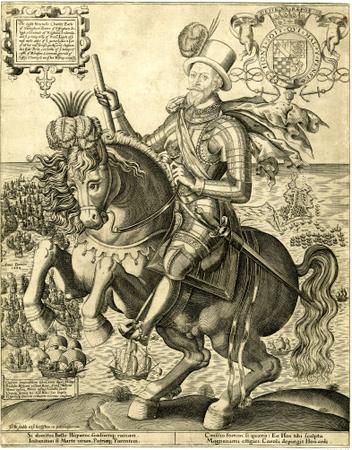The Berea College Art Gallery at Berea College in Berea, Ky., will present a free public symposium, "The Reign of the Horse: Exploring Cultural Connections Through Equine Images in Art," from 9 a.m. to 3:30 p.m. on Saturday, October 30, 2010. The symposium has been organized to coincide with the art exhibition, "The Horse in Japan, 1615-1912," on exhibit through November 12 in the Upper Traylor Gallery in the Traylor Art Building at Berea College. The symposium will take place on the Berea campus in Room 218 of the Frost Building. For more information about the symposium, contact symposium organizer, Dr. Elizabeth Tobey at etobey@nsl.org or 540-687-6542 x 11.
The dominant theme of the symposium will be on the role of the horse in the development of cultural connections and how widely Kentucky's influence extends throughout the world by virtue of its prominent role in the world of horsemanship. Curator and art historian Dr. Sandy Kita's research on woodblock prints from Japan's Edo period (1615 – 1868) examines the role of the horse in Japan's cultural and military history and in its art. Dr. Kita will discuss how the connections established throughout history continue into the present day, connecting Japanese culture and Kentucky traditions in surprising and significant ways. Dr. Kita is Senior Scholar at Chatham University in Pittsburgh, Pa.
Dr. Ingrid Cartwright will examine connections between equestrian imagery created in the American Revolutionary period and early Republic and the European artistic traditions from which they spring. Dr. Cartwright is an Assistant Professor of Art at Western Kentucky University in Bowling Green, Ky., and is the curator of "Hoofbeats and Heartbeats: The Horse in American Art," which is on view at the Art Museum at the University of Kentucky in Lexington through November 21.
Dr. Elizabeth Tobey will discuss the similarity of cultural roles of the horse throughout history, specifically how Italian city states cultivated diplomatic and trade ties with European and Ottoman courts through the equestrian activities of riding, racing, and horse breeding. Her contributions to the exhibition and the symposium will highlight the present-day connections between Kentucky and Japan through the Thoroughbred racing and breeding industry. Dr. Tobey is the Director of Research & Publications at the National Sporting Library & Museum in Middleburg, Va.
The exhibition features woodblock prints (ukiyo-e), paintings on silk, and a rare Edo-period book on horse ornaments, all with equestrian subject matter. In addition to selections drawn from the permanent collection of the Berea College Art Museum, the Jordan Schnitzer Museum of Art in Eugene, Ore.; the National Sporting Library & Museum; and Mr. and Mrs. Walter and Dörte Simmons have lent works to the exhibition. The show was co-curated by Drs. Kita and Tobey. For more information on the exhibition, call 859-985-3530 or visit www.berea.edu/art/dug/
Wednesday, October 27, 2010
Saturday, October 23, 2010
New article by Sandra Swart
 Here's a new article by our own Sandra Swart in Society & Animals.
Here's a new article by our own Sandra Swart in Society & Animals.Swart, Sandra. “Horses in the South African War, c. 1899-1902.” Society & Animals 18.4 (2010): 348-366.
http://www.ingentaconnect.com/content/brill/saa/2010/00000018/00000004/art00002
http://www.zotero.org/groups/horses_in_history_and_culture/items/154080936
ABSTRACT: This essay discusses the role of horses in war through the lens of their mortality in the South African War (1899-1902). This conflict was the biggest and most modern of the numerous precolonial and colonial wars that raged across the southern African subcontinent in the late nineteenth century. Aside from the human cost, the theater of war carried a heavy environmental toll, with the scorched-earth policy shattering the rural economy. The environmental charge extended to animals. Both sides relied on mounted troops, and the casualties suffered by these animals were on a massive scale. This is widely regarded as proportionally the most devastating waste of horseflesh in military history up until that time. This paper looks at the material context of—and reasons for—equine casualties and discusses the cultural dimension of equine mortality and how combatants on both sides were affected by this intimate loss.
Subscribe to:
Posts (Atom)



